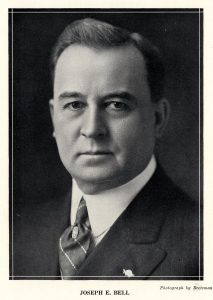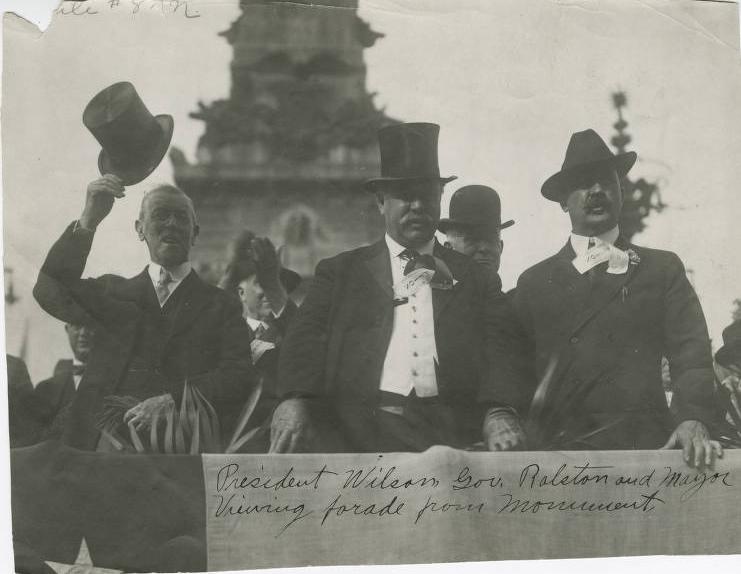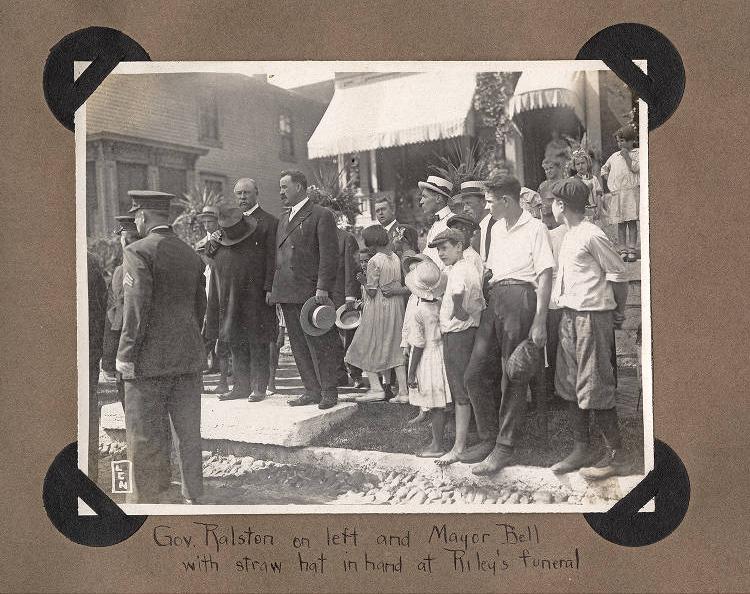
Photo info ...
(Nov. 28, 1865-Sept. 1, 1923). One of six children, Bell was reared on a farm in Union County Indiana. His education included a term in high school, a year at a normal school in Lebanon, Ohio (followed by two years teaching in Union County), and graduation from the legal department of the University of Michigan in 1888.

Bell came to Indianapolis in August 1888, to establish a law practice and a career in politics. He gave several speeches for the that fall, began an association with (then county chairman), and served as reading clerk of the House in the 1889 legislature.
Appointed assistant to the city attorney in 1893, he continued as deputy city attorney during Taggart’s three mayoral administrations, 1895-1901. Bell methodically climbed the ladder of professional politics: precinct committeeman, ward and county chairman, and delegate to county, state, and national party conventions. His attention to politics enhanced his legal career; his law partners included former mayor , future U.S. senator , and, after 1913, Walter D. Myers, a future Indiana House speaker and assistant U.S. postmaster general.

The was unusual because Bell won the office in a race that attracted three major candidates and four minor ones. With 37 percent of the vote, Bell easily outdistanced his two major opponents, a Republican and a Progressive. Election irregularities led to the indictment of Bell, Taggart, and many others on charges of conspiracy to commit a felony, but the mayor was acquitted after a two-hour jury deliberation.
As mayor-elect, Bell promised to stamp out vice. While he did establish the first police vice squad (see ), his term was more notable for public improvements. was transformed from an open sewer to an immense covered drain and a flood levee along the west bank of the was planned and constructed (see ). His administration began permitting street crossings at grade, of great benefit to the southside, and the boulevard system—Fall Creek, Maple Road (38th Street), Pleasant Run, Burdsal—was extended and developed. He also authorized the construction of the sunken gardens at (see ).
During Bell’s administration, 281 miles of streets, sidewalks, and sewers were built. Bell also wanted to build a sewage treatment plant to relieve the White River of effluents and blamed county Republicans in the legislature for the bill’s failure.
Bell was a founder of the Indiana Democratic Club, a member of the Masons, Elks, Knights of Pythias, and many other organizations, and a deacon of . He died from an accidental, self-inflicted shotgun wound suffered at the Indianapolis Gun Club.
FURTHER READING
- Brown, Paul D., ed. Indianapolis Men of Affairs, 1923; a Volume in Which Appears a Compilation of Portraits and Biographies of Men of Achievement of the Great Indiana Capital. American Biographical Society, 1923. https://iuidigital.contentdm.oclc.org/digital/collection/IndyHist/id/9364.
CITE THIS ENTRY
APA:
Doherty, W. (2021). Joseph E. Bell. Encyclopedia of Indianapolis. Retrieved Jan 6, 2026, from https://indyencyclopedia.org/joseph-e-bell/.
MLA:
Doherty, William. “Joseph E. Bell.” Encyclopedia of Indianapolis, 2021, https://indyencyclopedia.org/joseph-e-bell/. Accessed 6 Jan 2026.
Chicago:
Doherty, William. “Joseph E. Bell.” Encyclopedia of Indianapolis, 2021. Accessed Jan 6, 2026. https://indyencyclopedia.org/joseph-e-bell/.

Help improve this entry
Contribute information, offer corrections, suggest images.
You can also recommend new entries related to this topic.